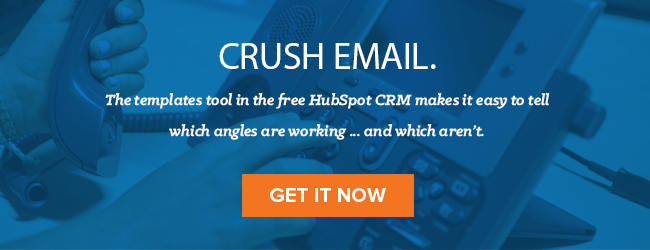

You’ve probably heard that what you say is more important than how you say it. But that’s simply not true: According to the world’s leading conversation analysts, the way you frame your questions and statements can make a huge difference in how they're received.
So next time you’re trying to get a conversation with a buyer to go your way, try these five research-backed communication techniques.
1) Use Leading Questions
To get the information you need, you have to ask prospects the tough questions. But you’ll need to be careful if you don’t want to piss them off or make them shut down.
According to Elizabeth Stokoe, a social interaction professor at Loughborough University, the trick is phrasing your inquiry like you already know the answer.
To give you an idea, here’s the same question two different ways:
Wrong: “If you don’t fix this issue, what will happen to your company’s revenue?”“”
Right: “Would you say your company’s revenue will be impacted if you don’t fix this issue, or … ?”
“Burying the key question as a follow-up and leaving the sentence hanging softens the inquiry and keeps the conversation going,” Stokoe says.
2) Ask If They’d Be “Willing” to Do Something
To persuade prospects to speak with you, try out your product, or refer you to a decision-maker, lead with, “Would you be willing to [your request]?”
Stokoe analyzed hundreds of calls between mediators and potential clients -- and often, those clients were adamantly opposed to mediation.
“However, I found that when mediators asked people if they would be ‘willing’ to mediate, even resistant callers agreed to try the service,” Stokoe says.
Asking people if they were “willing” was significantly more effective than asking if they were “interested.”
In fact, Stokoe says it’s the only word that can turn a hard no into a yes.
3) Don’t Say “Any”
When you want prospects to share their concerns, don’t ask if there’s “anything” they’d like to talk about.
Conversation analysts John Heritage and Jeffrey Robinson discovered 40% of patients didn’t tell their doctors about a health issue because their doctors asked if there was “anything else” to discuss. As it turns out, the word “any” generates negative responses.
Meanwhile, “Is there something else we need to take care of today?” made patients open up.
With this in mind, here’s how to set an agenda properly:
Wrong: “Is there anything else you’d like to cover today?”
Right: “Is there something else you’d like to cover today?”
4) Repeat Their Last Three Words
In a perfect world, you’d always be 100% engaged. But despite your best intentions, getting distracted sometimes is inevitable. Don’t panic if you realize you have no idea what the prospect’s been saying for the past two minutes -- just repeat their last few words.
“Parroting the last two or three words your companion said, in a sympathetic, questioning tone throws the conversational ball right back in your partner's court," explains social skills expert and author Leil Lowndes.
Here’s how that might look:
Prospect: And that’s why our projects backlog is out of control.
You: Out of control?
Prospect: Yeah. Actually, I’m worried my PM is on the verge of quitting.
You: That sounds tough. How have you tried to address this issue?
5) Use Nouns Instead of Verbs
The need to belong is a powerful motivator. In fact, it’s so powerful that reminding prospects they belong to a group can dramatically influence their behavior.
Stanford psychologist Gregory Walton found that asking, “How important is it to you to be a voter in tomorrow’s election?” made people far likelier to vote than asking, “How important is it to you to vote in tomorrow’s election?”
Along similar lines, those who said “I’m a chocolate eater” indulged far more in the dessert than participants who said, “I eat chocolate a lot.”
So next time you ask the prospect a question, swap out your verb for a noun.
Before: “How big of a priority is fixing your internal communication systems?"
After: “Are you the type of manager that prioritizes internal communication?”
Not only are these five strategies effective, but you can start using them straightaway. So, are you the type of salesperson who uses their words to get results?
What’s your best “say this, not that” example? Let us know in the comments!







![Confused About I.E. vs. E.G.? When to Use Each [With Examples]](https://blog.hubspot.com/hubfs/ie-vs-eg-fi%20%281%29.jpg)


